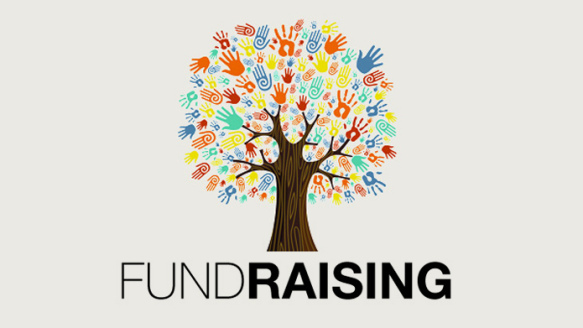Nonprofit Marketing: Strategies to Enhance Awareness and Drive Donations
Nonprofit Marketing: Strategies to Enhance Awareness and Drive Donations
Blog Article
The Role of Neighborhood Interaction in Nonprofit Fundraising: Structure Lasting Relationships for Lasting Assistance
Community involvement is increasingly identified as an essential element of successful not-for-profit fundraising. By cultivating authentic partnerships with local stakeholders, companies can grow trust fund and loyalty, which are essential for lasting support. Nevertheless, the techniques and methods used to engage areas vary extensively, elevating essential concerns regarding efficiency and impact. What are the most effective techniques for growing these vital links, and just how can nonprofits determine their success in this arena? Comprehending these characteristics can significantly affect the future of fundraising efforts and the general mission of not-for-profit companies.
Recognizing Neighborhood Involvement
Area interaction is an important element of effective not-for-profit fundraising initiatives. Nonprofits should identify essential stakeholders-- such as community participants, neighborhood organizations, and various other organizations-- to create effective interaction strategies.
Efficient neighborhood involvement is based on energetic listening and responsiveness to the demands and passions of the area. This process involves getting responses, understanding community characteristics, and ensuring that the company's goal aligns with neighborhood top priorities. Engaging the community can take various types, consisting of public meetings, volunteer opportunities, and collaboration initiatives, each designed to urge participation and investment in the company's goals.
Furthermore, community engagement must be come close to as a recurring dialogue as opposed to an one-time initiative. By cultivating an inclusive setting where neighborhood voices are listened to and valued, nonprofits can construct a strong foundation for future fundraising endeavors. Ultimately, a deep understanding of neighborhood involvement empowers companies to develop authentic links that boost their general effectiveness and sustainability.
Benefits of Solid Relationships
Solid relationships formed with area involvement yield countless advantages for not-for-profit fundraising initiatives. First and foremost, these connections foster depend on and credibility, vital components in encouraging benefactors to add. When potential fans see a nonprofit proactively associated with their neighborhood, they are more probable to rely on its objective and impact.

Moreover, these relationships promote efficient communication. Nonprofits can leverage their connections to share tales of influence, updates, and requires, ensuring that advocates remain enlightened and engaged. This open line of communication not just strengthens bonds yet additionally motivates word-of-mouth promotion, increasing the nonprofit's reach.
Lastly, strong area connections can bring in brand-new partners and sponsors. Companies and individuals are more likely to align with organizations that show purposeful area participation, supplying additional resources and assistance that can dramatically boost fundraising capabilities. Thus, cultivating robust relationships through area engagement is indispensable to a nonprofit's lasting fundraising success.
Methods for Reliable Interaction
How can nonprofits effectively engage their communities to boost fundraising initiatives? Routine updates, involving material, and calls-to-action can galvanize community passion and engagement.
Second, hosting community occasions, such as workshops, volunteer chances, or fundraising drives, helps with in person communication, allowing nonprofits to display their effect and efforts. These occasions not just increase funds yet additionally grow connections and allow neighborhood members to engage straight with the reason.
Third, executing customized communication techniques can enhance engagement. Customizing messages to details benefactor sections based upon rate of interests and previous payments promotes a feeling of belonging and investment in the company's mission.
Last but not least, developing partnerships with neighborhood companies and area leaders can magnify outreach efforts. Joint initiatives can improve visibility and integrity, demonstrating a cumulative dedication to the neighborhood's health. By incorporating these strategies, nonprofits can develop lasting connections that boost fundraising initiatives and drive lasting support.
Determining Involvement Success
While involving the neighborhood is essential for successful not-for-profit fundraising, measuring the effectiveness of these interaction initiatives is just as important. Developing clear metrics allows companies to examine how well they are getting in touch with their audience and accomplishing their fundraising objectives. Key performance signs (KPIs) such as benefactor retention rates, volunteer participation levels, and involvement on social media platforms offer concrete data for examination.

Consistently examining these metrics enables companies to pivot their techniques when required, guaranteeing that area interaction remains lined up with their general mission. In addition, sharing these results with stakeholders cultivates transparency and constructs depend on, encouraging more neighborhood participation. Inevitably, a robust measurement structure not only notifies future fundraising campaigns however additionally strengthens the partnership between the nonprofit and its fans, laying the groundwork for sustainable success.
Study in Neighborhood Influence
Many study highlight the profound impact that neighborhood involvement can have on not-for-profit fundraising success. One noteworthy instance is the "Food for Idea" campaign, where a local food bank partnered with organizations and colleges to host neighborhood suppers. These events not just raised funds yet also fostered a sense of belonging amongst individuals, dramatically increasing benefactor retention prices.
An additional compelling situation is the "Green Spaces Task," which involved neighborhood residents in the revitalization of city parks. This effort not only garnered monetary support from local organizations however additionally cultivated a volunteer base that added to ongoing maintenance and programs. The sense of possession and satisfaction amongst community participants equated into continual contributions.
In the realm of arts, the "Art for All" project successfully engaged neighborhood musicians and patrons to develop dig this collaborative art setups, leading to raised presence and donations for a neighborhood arts nonprofit.
These examples Continued highlight that when nonprofits prioritize neighborhood involvement, they can develop lasting partnerships that boost fundraising efforts, making sure sustainable support and cultivating a vivid community culture. Such cases show that neighborhood interaction is not merely a strategy yet a necessary column of not-for-profit success.
Conclusion
In verdict, neighborhood interaction is essential to the success of not-for-profit fundraising initiatives. By fostering solid connections with regional stakeholders, companies improve depend on and reliability, causing improved benefactor retention and loyalty. Implementing efficient interaction methods and measuring their effect ensures that nonprofits can adjust and prosper. Eventually, a durable foundation of area assistance not only magnifies fundraising potential however also grows a culture of cooperation, vital for attaining long-lasting business objectives and maintaining meaningful influence.
Nonprofits should identify key stakeholders-- such as neighborhood discover here participants, regional businesses, and various other organizations-- to produce efficient involvement strategies.

In verdict, neighborhood engagement is indispensable to the success of nonprofit fundraising efforts.
Report this page